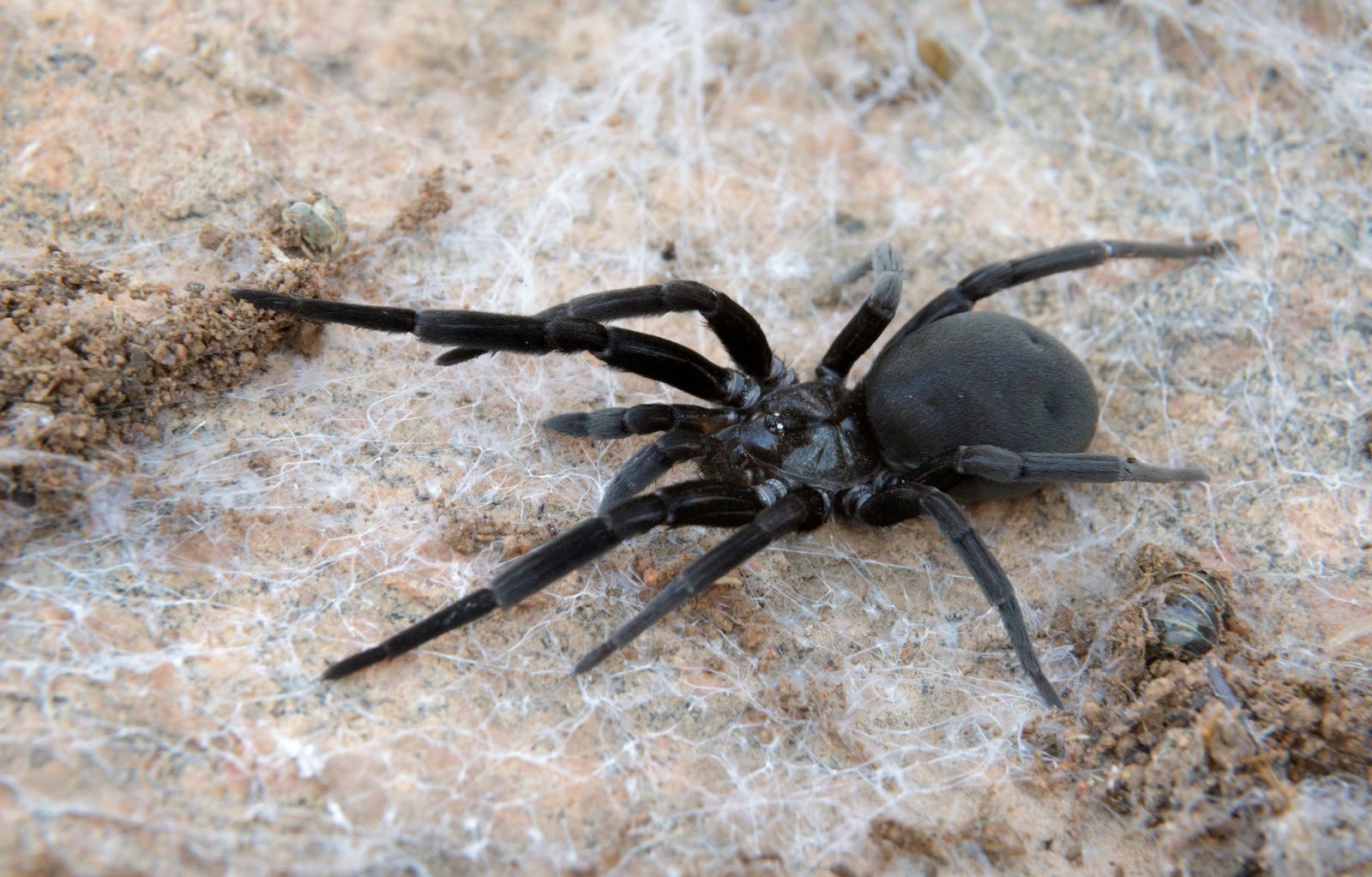You’re folding laundry, settling into the evening, when you catch movement in your peripheral vision: there it is again. A spider, tucked into the ceiling corner or crouched behind the baseboard heater, unmoving but watching.
Spiders have their place in the ecosystem, even indoors. They eat flies, ants, roaches, and other bugs that you really don’t want multiplying in your home. But I also understand that peace of mind matters.
In this guide, I’ll walk you through the spiders you’re most likely to see inside your Florida home.
Let’s get into it.
🕷️ The 10 Most Popular Spiders Found Inside Florida Homes
From fuzzy jumpers to fast-moving giants, here are the spiders most often spotted indoors across Florida.
1. Southern House Spider
Often mistaken for the brown recluse. Large, fast, and usually found near windows or attics. Harmless, just startling.
2. Southern Black Widow
Glossy black with a red hourglass mark. Found in garages, sheds, and woodpiles. Venomous, seek help if bitten.
3. Brown Widow
Tannish body with an orange hourglass. Hides in patio furniture and mailboxes. Less toxic than black widows but still a concern.
4. Cellar Spider (Daddy Long Legs)
Thin legs and shaky webs. Frequently seen in basements and garages. Completely harmless.
5. Jumping Spider
Tiny, fuzzy, and quick. Found on windowsills and ceilings. Great at catching bugs, no danger to people.
6. Wolf Spider
Big and hairy. Doesn’t spin webs—hunts at night. Seen near floors and garages. Harmless but intimidating
7. Huntsman Spider
Huge legs, lightning-fast. Lives behind furniture or in garages. Scary but helps control roaches and other pests.
8. Sac Spider
Pale and small, hides in ceiling corners. Bites if threatened, but effects are mild.
9. Golden Silk Orb-Weaver
Big and often mistaken for tarantulas. Usually outside, but may wander indoors through screen enclosures.
10. Brown Recluse (Rare in Florida)
Tan with a violin-shaped mark. Rare in Florida, but serious if bitten. seek medical help.
🕷️ How to Identify Florida Spiders Without Freaking Out
Most people aren’t trained arachnologists. But you don’t need a PhD to figure out whether the spider in your laundry room is harmless or something to handle with care.
The good news? You can identify the most popular house spiders with just a little observation. Here’s how to get started:
Key Traits to Look For
Size & Shape: Is it small and round like a jumping spider, or large and flat like a huntsman? The body shape gives away a lot.
Color & Markings: Look for specific patterns like the red hourglass of a black widow or the violin mark of a brown recluse.
Eye Arrangement: This one's tricky, but it’s a solid clue. Recluse spiders have six eyes arranged in pairs, unlike most spiders with eight.
Web Style: Messy cobwebs suggest a house spider. Large, circular webs? Likely an orb weaver. No web at all? Possibly a wolf or jumping spider.
Movement: Jumping spiders are fast and bouncy. Wolf spiders scurry. Cellar spiders shake in their webs when disturbed.
🕷️ 7 Pro Tips to Keep Spiders Out (Without Overreacting)
I get it, seeing a spider in the house can be unsettling. But there’s no need to grab a flamethrower or sleep in a hotel. These proven steps can go a long way toward keeping your home spider-free without the drama.
1. Seal Cracks and Gaps
Spiders sneak in through the same cracks bugs do. Check along baseboards, window frames, sliding doors, and especially your garage. A worn-out door seal is a welcome mat for wolf spiders.
2. Clean Webs Weekly
It’s simple but powerful. Removing webs discourages spiders from settling in. Pay attention to corners of ceilings, attic beams, light fixtures, and behind furniture.
3. Cut Back Vegetation Around the Home
Spiders love dense plants and overgrown shrubs. If they touch your walls or roofline, you’re basically giving them a direct bridge indoors, especially during our humid Florida summers.
4. Declutter Storage Areas
Cardboard boxes, bags of holiday decorations, and forgotten corners of the garage are spider goldmines. Store items in sealed plastic bins, and clean out spaces a few times a year.
5. Check Patio Furniture and Cushions
Brown widows are notorious for hiding under outdoor chairs, in hollow metal legs, and even under mailbox lids. Flip cushions, wipe down seating, and watch where you reach.
6. Reduce Indoor Insect Activity
Spiders don’t come for you, they come for the bugs. If you’ve got ants, flies, or roaches, spiders will follow. A good insect control program is your first line of defense.
7. Use Web-Sweeping Services
Pros sweep down existing webs, especially in garages, eaves, and porches, and apply treatments to keep spiders from coming back.
It’s a simple service that makes a big difference, and for many Florida families, it’s a must-have.
Florida Spiders Aren’t All Bad But You Should Be Informed
Most spiders you’ll find inside a Florida home are more helpful than harmful. They quietly take care of roaches, flies, and other insects before you ever notice them. In many ways, they’re nature’s built-in pest control system.
But your peace of mind matters too. Finding more webs than you can clean, spotting venomous species like black widows or brown widows, or discovering egg sacs tucked away in corners, it often stresses people out.
If spiders are becoming more than just an occasional guest, we’re here to help you take back your peace of mind, safely and professionally.


